1mg
Showing 3051–3100 of 3770 results
-
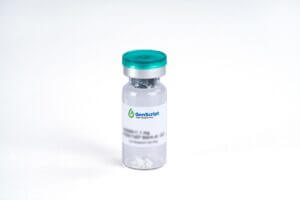
IL-31, Human
$3,458.63 Add to cart View Product DetailsHuman IL-31 is a T-cell derived cytokine that shares several structural and functional characteristics with IL-6, Oncostatin M, LIF, and Cardiotrophin-1. It signals through a receptor complex comprised of GPL (GP130-like, IL-31RA) and OSMR (Oncostatin M receptor). GPL/OSMR signaling is a strong activator of STAT3 and STAT5, and can also activate STAT1, Jak1, and Jak2 signaling pathways. IL-31 regulated immune responses have been implicated in skin physiology and inflammatory skin diseases.
-

IL-33, Human
$2,018.25 Add to cart View Product DetailsInterleukin-33 (IL-33) is a proinflammatory cytokine that belongs to the IL-1 family. IL-33 is expressed in a variety of cells, including epithelial and endothelial cells, smooth muscle cells, macrophages and fibroblasts. The primary receptors for IL-33 are ST2 and IL-1 receptor accessory protein (IL-1RAcP), both of which belong to the IL-1 receptor family. IL-33 is localized to the nucleus of resting cells where it binds to chromatin in the H2A-H2B histone complex as a transcriptional suppressor. IL-33 is secreted by cells during injury which induces a T-helper 2 type inflammatory response. Evidence suggests IL-33 plays a role in autoimmune disease. IL-33’s interaction with ST2 can drive allergic pathology and IL-33 has been reported to play a role in the development of rheumatoid arthritis and systemic lupus erythematosus.
-

IL-33, Mouse
$3,458.63 Add to cart View Product DetailsInterleukin-33 (IL-33) is a proinflammatory cytokine that belongs to the IL-1 family. IL-33 is expressed in a variety of cells, including epithelial and endothelial cells, smooth muscle cells, macrophages and fibroblasts. The primary receptors for IL-33 are ST2 and IL-1 receptor accessory protein (IL-1RAcP), both of which belong to the IL-1 receptor family. IL-33 is localized to the nucleus of resting cells where it binds to chromatin in the H2A-H2B histone complex as a transcriptional suppressor. IL-33 is secreted by cells during injury which induces a T-helper 2 type inflammatory response. Evidence suggests IL-33 plays a role in autoimmune disease. IL-33’s interaction with ST2 can drive allergic pathology and IL-33 has been reported to play a role in the development of rheumatoid arthritis and systemic lupus erythematosus.
-

IL-4 R, Human
$3,648.38 Add to cart View Product DetailsInterleukin-4 Receptor, also known as IL-4RA and CD124, is a transmembrane glycoprotein belonging to the class I receptor family. It is highly expressed by activated T-cells. IL-4RA couples with γ chain to form the type I receptor for IL-4. The extracellular domain of IL-4RA binds to IL-4 and antagonizes its activity. IL-4RA plays an important role in Th2 cell differentiation, Ig class switching and alternative macrophage activation. It has also been implicated in allergic inflammation, tumor progression and atherogenesis.
-

IL-4, Human
$1,177.31 Add to cart View Product DetailsInterleukin-4 (IL-4) is a pleiotropic cytokine regulates diverse T and B cell responses including cell proliferation, survival, and gene expression. It has important effects on the growth and differentiation of different immunologically competent cells. Interleukin-4 is produced by mast cells, T cells, and bone marrow stromal cells. IL-4 regulates the differentiation of native CD4+ T cells (Th0 cells) into helper Th2 cells, and regulates the immunoglobulin class switching to the IgG1 and IgE isotypes. IL-4 has numerous important biological functions including stimulating B-cells activation, T-cell proliferation and CD4+ T-cells differentiation to Th2 cells. It is a key regulator in hormone control and adaptive immunity. IL-4 also plays a major role in inflammation response and wound repair via activation of macrophage into M2 cells. IL-4 is stabilized by three disulphide bonds forming a compact globular protein structure. Four alpha-helix bundle with left-handed twist is dominated half of the protein structure with 2 overhand connections and fall into a 2-stranded anti-parallel beta sheet.
-

IL-4, Mouse
$1,177.31 Add to cart View Product DetailsInterleukin-4 (IL-4) is a pleiotropic cytokine regulates diverse T and B cell responses including cell proliferation, survival, and gene expression. It has important effects on the growth and differentiation of different immunologically competent cells. Interleukin-4 is produced by mast cells, T cells, and bone marrow stromal cells. IL-4 regulates the differentiation of native CD4+ T cells (Th0 cells) into helper Th2 cells, and regulates the immunoglobulin class switching to the IgG1 and IgE isotypes. IL-4 has numerous important biological functions including stimulating B-cells activation, T-cell proliferation and CD4+ T-cells differentiation to Th2 cells. It is a key regulator in hormone control and adaptive immunity. IL-4 also plays a major role in inflammation response and wound repair via activation of macrophage into M2 cells. IL-4 is stabilized by three disulphide bonds forming a compact globular protein structure. Four alpha-helix bundle with left-handed twist is dominated half of the protein structure with 2 overhand connections and fall into a 2-stranded anti-parallel beta sheet.
-
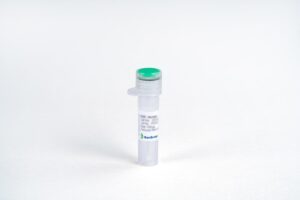
IL-4, Porcine
$2,402.06 Add to cart View Product DetailsInterleukin-4 (IL-4) is a pleiotropic cytokine regulates diverse T and B cell responses including cell proliferation, survival, and gene expression. It has important effects on the growth and differentiation of different immunologically competent cells. Interleukin-4 is produced by mast cells, T cells, and bone marrow stromal cells. IL-4 regulates the differentiation of native CD4+ T cells (Th0 cells) into helper Th2 cells, and regulates the immunoglobulin class switching to the IgG1 and IgE isotypes. IL-4 has numerous important biological functions including stimulating B-cells activation, T-cell proliferation and CD4+ T-cells differentiation to Th2 cells. It is a key regulator in hormone control and adaptive immunity. IL-4 also plays a major role in inflammation response and wound repair via activation of macrophage into M2 cells. IL-4 is stabilized by three disulphide bonds forming a compact globular protein structure. Four alpha-helix bundle with left-handed twist is dominated half of the protein structure with 2 overhand connections and fall into a 2-stranded anti-parallel beta sheet.
-

IL-5, Human
$1,470.56 Add to cart View Product DetailsInterleukin-5 (IL-5), produced by mast cells, T cells and eosinophils, is responsible for the activities attributed to eosinophil differentiating factor, B cell growth factor II and T cell-replacing factor (TRF). It can increase production and mobilization of eosinophils and CD34+ progenitors from the bone marrow. IL-5 plays an important role in inducing cell-mediated immunity against parasitic infections and certain tumors. IL-5 also promotes differentiation of basophils and primes them for histamine and leukotriene release.
-

IL-5, Human(CHO-expressed)
$1,470.56 Add to cart View Product DetailsInterleukin-5 (IL-5), produced by mast cells, T cells and eosinophils, is responsible for the activities attributed to eosinophil differentiating factor, B cell growth factor II and T cell-replacing factor (TRF). It can increase production and mobilization of eosinophils and CD34+ progenitors from the bone marrow. IL-5 plays an important role in inducing cell-mediated immunity against parasitic infections and certain tumors. IL-5 also promotes differentiation of basophils and primes them for histamine and leukotriene release.
-

IL-5, Mouse(CHO-expressed)
$1,470.56 Add to cart View Product DetailsInterleukin-5 (IL-5), produced by mast cells, T cells and eosinophils, is responsible for the activities attributed to eosinophil differentiating factor, B cell growth factor II and T cell-replacing factor (TRF). It can increase production and mobilization of eosinophils and CD34+ progenitors from the bone marrow. IL-5 plays an important role in inducing cell-mediated immunity against parasitic infections and certain tumors. IL-5 also promotes differentiation of basophils and primes them for histamine and leukotriene release.
-

IL-5, Rat
$2,018.25 Add to cart View Product DetailsInterleukin-5 (IL-5), produced by mast cells, T cells and eosinophils, is responsible for the activities attributed to eosinophil differentiating factor, B cell growth factor II and T cell-replacing factor (TRF). It can increase production and mobilization of eosinophils and CD34+ progenitors from the bone marrow. IL-5 plays an important role in inducing cell-mediated immunity against parasitic infections and certain tumors. IL-5 also promotes differentiation of basophils and primes them for histamine and leukotriene release.
-

IL-5, Rat
$2,018.25 Add to cart View Product DetailsInterleukin-5 (IL-5), produced by mast cells, T cells and eosinophils, mediates the activities of eosinophil differentiating factor, B cell growth factor II and T cell-replacing factor (TRF). It can increase production and mobilization of eosinophils and CD34+ progenitors from the bone marrow. IL-5 plays an important role in inducing cell-mediated immunity against parasitic infections and certain tumors. IL-5 also promotes differentiation of basophils and primes them for histamine and leukotriene release.
-
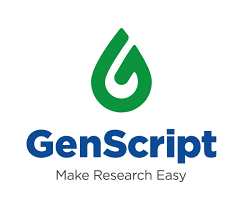
IL-5RA, His, Human
$2,238.19 Add to cart View Product DetailsInterleukin-5 Receptor alpha (IL-5Rα, CD125) is a 60 kDa hematopoietin receptor that plays a dominant role in eosinophil biology. Mature human IL-5 Rα consists of a 322 aa extracellular domain (ECD) with a WSxWS motif and a four cysteine motif, a 20 aa transmembrane segment, and a 58 aa cytoplasmic domain. Within the ECD, human IL-5Rα shares 71% aa sequence identity with mouse and rat IL-5 Rα. Alternate splicing of human IL-5 Rα generates soluble secreted forms which function as IL-5 antagonists. The high affinity receptor for IL-5 is a complex that consists of the ligand binding IL-5 Rα and the transmembrane common β chain (βc/CD131) which is shared with the receptor complexes for IL-3 and GMCSF. IL-5 Rα binds IL-5 at low affinity and then associates with preformed βc oligomers to form the signaling competent receptor complex. IL-5 stimulation of CD34+ hematopoietic progenitor cells induces the up-regulation of transmembrane IL-5Rα followed by eosinophilic differentiation and activation.
-
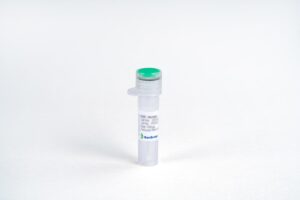
IL-6, Human
$1,177.31 Add to cart View Product DetailsInterleukin-6 (IL-6), also known as BSF-2, CDF and IFNB2, is a pleiotropic cytokine that participates in both pro-inflammatory and anti-inflammatory responses. It is produced mainly by T cells, macrophages, monocytes, endothelial cells and muscle cells. IL-6 binds to IL-6 receptor (IL-6R) to trigger the association of IL-6R with gp130, inducing signal transduction through JAKs and STATs. The biological functions of IL-6 are diverse. It stimulates B cell differentiation and antibody production, myeloma and plasmacytoma growth, and nerve cell differentiation. It also acts as a myokine, produced by muscle cells in response to muscle contraction and released into the blood stream to help break down fats and improve insulin resistance.
-

IL-6, Human(CHO-expressed)
$1,138.50 Add to cart View Product DetailsInterleukin-6 (IL-6), also known as BSF-2, CDF and IFNB2, is a pleiotropic cytokine that acts in both pro-inflammatory and anti-inflammatory responses. It is produced mainly by T cells, macrophages, monocytes, endothelial cells and muscle cells. IL-6 binds to IL-6 receptor (IL-6R) to trigger the association of IL-6R with gp130, inducing signal transduction through JAKs and STATs. The biological functions of IL-6 are diverse. It stimulates B cell differentiation and antibody production, myeloma and plasmacytoma growth, as well as nerve cell differentiation. It also acts as a myokine, produced by muscle cells in response to muscle contraction, to be released to the blood stream to help break down fats and improve insulin resistance.
-

IL-6, Mouse
$2,906.63 Add to cart View Product DetailsInterleukin-6 (IL-6), also known as BSF-2, CDF and IFNB2, is a pleiotropic cytokine that participates in both pro-inflammatory and anti-inflammatory responses. It is produced mainly by T cells, macrophages, monocytes, endothelial cells and muscle cells. IL-6 binds to IL-6 receptor (IL-6R) to trigger the association of IL-6R with gp130, inducing signal transduction through JAKs and STATs. The biological functions of IL-6 are diverse. It stimulates B cell differentiation and antibody production, myeloma and plasmacytoma growth, and nerve cell differentiation. It also acts as a myokine, produced by muscle cells in response to muscle contraction and released into the blood stream to help break down fats and improve insulin resistance.
-

IL-6, Rat (HEK 293-expressed)
$2,018.25 Add to cart View Product DetailsInterleukin-6 (IL-6), also known as BSF-2, CDF and IFNB2, is a pleiotropic cytokine that participates in both pro-inflammatory and anti-inflammatory responses. It is produced mainly by T cells, macrophages, monocytes, endothelial cells and muscle cells. IL-6 binds to IL-6 receptor (IL-6R) to trigger the association of IL-6R with gp130, inducing signal transduction through JAKs and STATs. The biological functions of IL-6 are diverse. It stimulates B cell differentiation and antibody production, myeloma and plasmacytoma growth, and nerve cell differentiation. It also acts as a myokine, produced by muscle cells in response to muscle contraction and released into the blood stream to help break down fats and improve insulin resistance.
-

IL-7, His, Human(CHO-expressed)
$2,018.25 Add to cart View Product DetailsInterleukin-7 (IL-7), also known as lymphopoietin 1 and pre-B cell factor, is a hematopoietic growth factor belonging to the IL-7/IL-9 family. It is produced by keratinocytes, dendritic cells, hepatocytes, neurons and epithelial cells. IL-7 binds and signals through IL-7 receptor, a heterodimer consisting of IL-7 receptor alpha and common gamma chain receptor. IL-7 plays a role in regulating early B cell and T cell development. It is also important for optimal dendritic cell-T cell interaction.
-

IL-7, Human
$3,458.63 Add to cart View Product DetailsInterleukin-7 (IL-7), also known as lymphopoietin 1 and pre-B cell factor, is a hematopoietic growth factor belonging to the IL-7/IL-9 family. It is produced by keratinocytes, dendritic cells, hepatocytes, neurons and epithelial cells. IL-7 binds and signals through IL-7 receptor, a heterodimer consisting of IL-7 receptor alpha and common gamma chain receptor. IL-7 plays a role in regulating early B cell and T cell development. It is also important for optimal dendritic cell-T cell interaction.
-
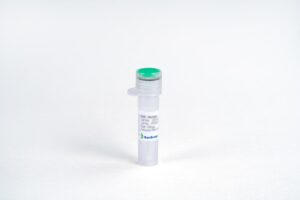
IL-8 (77aa)/CXCL8, Human
$1,323.94 Add to cart View Product DetailsInterleukin-8 (IL-8), also known as CXCL8, GCP-1 and NAP-1, is one of the first discovered chemokines and belongs to the CXCL family, in which the first two conserved cysteines are separated by one residue. In vivo, IL-8 exists in two forms: a 77 a.a. protein produced by endothelial cells, and the more active 72 a.a. protein produced by monocytes. The receptors for IL-8 are the seven-helical G-protein coupled receptors CXCR1 and CXCR2, exclusively expressed on neutrophils. The functions of IL-8 are to induce rapid changes in cell morphology, activate integrins, and release the granule contents of neutrophils. Thus, IL-8 can enhance the antimicrobial actions of defense cells. It is secreted by monocytes, macrophages and endothelial cells. IL-8 signals through CXCR1 and CXCR2 to chemoattract neutrophils, basophils, and T cells. IL-8 is also a potent promoter of angiogenesis. Other functions of this protein, such as involvement in bronchiolitis pathogenesis, have also been reported.
-

IL-8/CXCL8 (77aa), Human(CHO-expressed)
$1,177.31 Add to cart View Product DetailsInterleukin-8 (IL-8), also known as CXCL8, GCP-1 and NAP-1, is one of the first discovered chemokines and belongs to the CXCL family, in which the first two conserved cysteines are separated by one residue. In vivo, IL-8 exists in two forms: a 77 a.a. protein produced by endothelial cells, and the more active 72 a.a. protein produced by monocytes. The receptors for IL-8 are the seven-helical G-protein coupled receptors CXCR1 and CXCR2, exclusively expressed on neutrophils. The functions of IL-8 are to induce rapid changes in cell morphology, activate integrins, and release the granule contents of neutrophils. Thus, IL-8 can enhance the antimicrobial actions of defense cells. It is secreted by monocytes, macrophages and endothelial cells. IL-8 signals through CXCR1 and CXCR2 to chemoattract neutrophils, basophils, and T cells. IL-8 is also a potent promoter of angiogenesis. Other functions of this protein, such as involvement in bronchiolitis pathogenesis, have also been reported.
-
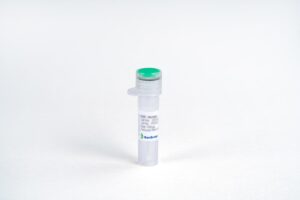
IL-9, Human
$2,018.25 Add to cart View Product DetailsInterleukin 9, also known as IL9, is a cytokine (cell signalling molecule) belonging to the group of interleukins. The protein encoded by this gene is a cytokine produced by T-cells and specifically by CD4+ helper cells that acts as a regulator of a variety of hematopoietic cells. This cytokine stimulates cell proliferation and prevents apoptosis. It functions through the interleukin-9 receptor (IL9R), which activates different signal transducer and activator (STAT) proteins and thus connects this cytokine to various biological processes. The gene encoding this cytokine has been identified as a candidate gene for asthma. Genetic studies on a mouse model of asthma demonstrated that this cytokine is a determining factor in the pathogenesis of bronchial hyperresponsiveness.
-

IL-9, Mouse
$2,018.25 Add to cart View Product DetailsInterleukin 9, also known as IL9, is a cytokine (cell signalling molecule) belonging to the group of interleukins. The protein encoded by this gene is a cytokine produced by T-cells and specifically by CD4+ helper cells that acts as a regulator of a variety of hematopoietic cells. This cytokine stimulates cell proliferation and prevents apoptosis. It functions through the interleukin-9 receptor (IL9R), which activates different signal transducer and activator (STAT) proteins and thus connects this cytokine to various biological processes. The gene encoding this cytokine has been identified as a candidate gene for asthma. Genetic studies on a mouse model of asthma demonstrated that this cytokine is a determining factor in the pathogenesis of bronchial hyperresponsiveness.
-
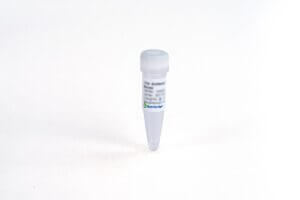
IL6 (55C6), mAb, Mouse
$172.50 Add to cart View Product DetailsInterleukin-6 (IL6) is a multi-functional cytokine, produced by variety of cells including T-cells, B-cells, monocytes, fibroblasts, keratinocytes, endothelial cells, mesangial cells, astrocytes and bone marrow stroma cells. It is involved in the induction of B-cell differentiation, growth promotion of myeloma cells and proliferation and differentiation of T cells. IL6 can regulate immune responses, acute phase reactions and hematopoiesis.
-

IL6 (55E9), mAb, Mouse
$172.50 Add to cart View Product DetailsInterleukin-6 (IL6) is a multi-functional cytokine, produced by variety of cells including T-cells, B-cells, monocytes, fibroblasts, keratinocytes, endothelial cells, mesangial cells, astrocytes and bone marrow stroma cells. It is involved in the induction of B-cell differentiation, growth promotion of myeloma cells and proliferation and differentiation of T cells. IL6 can regulate immune responses, acute phase reactions and hematopoiesis.
-

IP-10/CXCL10, Human
$957.38 Add to cart View Product DetailsIP-10/CXCL10 also known as CXCL10, is originally identified as an IFN-γ-inducible gene in monocytes, fibroblasts and endothelial cells. It has since been shown that IP-10 mRNA is also induced by LPS, IL-1β, TNF-α, IL-12 and viruses. Additional cell types that have been shown to express IP-10 include activated T-lymphocytes, splenocytes, keratinocytes, osteoblasts, astrocytes, and smooth muscle cells. IP-10 is also expressed in psoriatic and lepromatous lesions of skin. The mouse homologue of human IP-10, Crg-2, has been cloned and shown to share approximately 67% amino acid sequence identity with human IP-10.
-

IP-10/CXCL10, Mouse
$2,018.25 Add to cart View Product DetailsTAFA-2 also named FAM19A2 belongs to the TAFA family of chemokinelike proteins. Like other members of the FAM19/TAFA family, with the exception of TAFA5, mature TAFA1 to 4 contain 10 regularly spaced cysteine residues. Human TAFA2 is 97% aa identical to mouse TAFA2. TAFA2 expression can be detected in the central nervous system (CNS), colon, heart, lung, spleen, kidney, and thymus, but its expression in the CNS is 50 to 1000fold higher than in other tissues. Within the CNS, TAFA2 expression is highest in the occipital and frontal cortex (3 to 10fold more abundantly expressed than in other cortical regions) and medulla. The biological functions of TAFA family members remain to be determined, but there are a few tentative hypotheses.
-

KGF/FGF-7, Human
$2,018.25 Add to cart View Product DetailsKeratinocyte Growth Factor (KGF) is a highly specific epithelial mitogen produced by fibroblasts and mesenchymal stem cells. KGF belongs to the heparin binding Fibroblast Growth Factor (FGF) family, and is known as FGF-7. However, in contrast to the FGF-1, which binds to all known FGF receptors with high affinity, KGF only binds to a splice variant of an FGF receptor, FGFR2-IIIb. FGFR2-IIIb is produced by most of the epithelial cells, indicating that KGF plays roles as a paracrine mediator. KGF induces the differen-tiation and proliferation of various epithelial cells, including keratinocytes in the epidermis, hair follicles and sebaceous glands, and is responsible for the wound repairs of various tissues, including lung, bladder, and kidney.
-

KGF/FGF-7, Mouse
$2,018.25 Add to cart View Product DetailsKeratinocyte Growth Factor (KGF) is a highly specific epithelial mitogen produced by fibroblasts and mesenchymal stem cells. KGF belongs to the heparin binding Fibroblast Growth Factor (FGF) family, and is known as FGF-7. However, in contrast to FGF-1, which binds to all known FGF receptors with high affinity, KGF only binds to a splice variant of the FGF receptor, FGFR2-IIIb. FGFR2-IIIb is expressedby most epithelial cells, indicating KGF’s roleas a paracrine mediator. KGF induces the differentiation and proliferation of various epithelial cells such as keratinocytes in the epidermis, hair follicles and sebaceous glands., KGF is also responsible for wound repair of various tissuesincluding lung, bladder, and kidney.
-

KRAS, His, Human (G12C)
$1,293.75 Add to cart View Product DetailsThe KRAS gene provides instructions for making a protein called K-Ras, part of the RAS/MAPK pathway. The protein relays signals from outside the cell to the cell’s nucleus. These signals instruct the cell to grow and divide (proliferate) or to mature and take on specialized functions (differentiate). The K-Ras protein is a GTPase, which means it converts a molecule called GTP into another molecule called GDP. In this way the K-Ras protein acts like a switch that is turned on and off by the GTP and GDP molecules. KRAS is usually tethered to cell membranes because of the presence of an isoprene group on its C-terminus. There are two protein products of the KRAS gene in mammalian cells that result from the use of alternative exon 4 (exon 4A and 4B respectively): K-Ras4A and K-Ras4B, these proteins have different structure in their C-terminal region and use different mechanisms to localize to cellular membranes including the plasma membrane.
-

KRAS, His, Human (G12D)
$1,293.75 Add to cart View Product DetailsThe KRAS gene provides instructions for making a protein called K-Ras, part of the RAS/MAPK pathway. The protein relays signals from outside the cell to the cell’s nucleus. These signals instruct the cell to grow and divide (proliferate) or to mature and take on specialized functions (differentiate). The K-Ras protein is a GTPase, which means it converts a molecule called GTP into another molecule called GDP. In this way the K-Ras protein acts like a switch that is turned on and off by the GTP and GDP molecules. KRAS is usually tethered to cell membranes because of the presence of an isoprene group on its C-terminus. There are two protein products of the KRAS gene in mammalian cells that result from the use of alternative exon 4 (exon 4A and 4B respectively): K-Ras4A and K-Ras4B, these proteins have different structure in their C-terminal region and use different mechanisms to localize to cellular membranes including the plasma membrane.
-
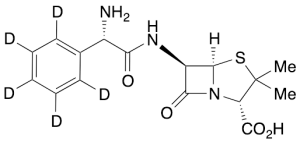
L-(+)-Ampicillin-d5
$258.75 Add to cart View Product DetailsMolecular Formula : C16H14D5N3O4S
-
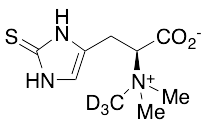
L-(+)-Ergothioneine-d3
$364.84 Add to cart View Product DetailsMolecular Formula : C9 2H3 H12 N3 O2 S
-
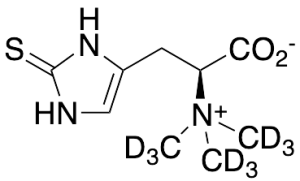
L-(+)-Ergothioneine-d9
$255.30 Add to cart View Product DetailsMolecular Formula : C9H6D9N3O2S
-

L-Alanine-13C3
$78.49 Add to cart View Product DetailsMolecular Formula : 13C3H7NO2
-

L-Anserine-d4 (N-b-alanyl-d4)
$1,133.33 Add to cart View Product DetailsMolecular Formula : C10 D4 H12 N4 O3
-

L-Arginine-13C,d4 Dihydrochloride
$318.26 Add to cart View Product DetailsMolecular Formula : C5¹³CH10D4N4O2 . 2HCl
-

L-Arginine-13C6 Hydrochloride
$178.54 Add to cart View Product DetailsMolecular Formula : 13C6 H14 N4 O2 . Cl H
-

L-Arginine-15N4 Hydrochloride
$206.14 Add to cart View Product DetailsMolecular Formula : C6 H14 15N4 O2 . Cl H
-
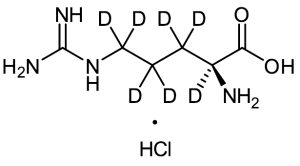
L-Arginine-2,3,3,4,4,5,5-d7 HCl
$56.93 Add to cart View Product DetailsMolecular Formula : C6 D7 H7 N4 O2 . H Cl
-
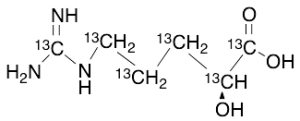
L-Argininic Acid-13C6
$215.63 Add to cart View Product DetailsMolecular Formula : 13C6 H13 N3 O3
-

L-Ascorbic Acid-13C6
$150.08 Add to cart View Product DetailsMolecular Formula : 13C6H8O6
-

L-Balenine Hydrochloride
$224.25 Add to cart View Product DetailsMolecular Formula : C10H16N4O3 • HCl
-
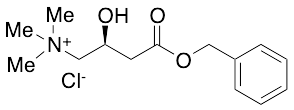
L-Carnitine Benzyl Ester Chloride
$176.81 Add to cart View Product DetailsMolecular Formula : C14 H22 N O3 . Cl
-
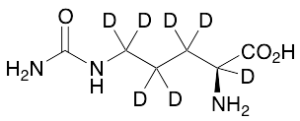
L-Citrulline-d7
$255.30 Add to cart View Product DetailsMolecular Formula : C6 D7 H6 N3 O3
-

L-Cysteine-13C3
$130.24 Add to cart View Product DetailsMolecular Formula : 13C H7 N O2 S
-

L-Cysteine-13C3,15N
$161.29 Add to cart View Product DetailsMolecular Formula : 13C3H715NO2S
-

L-Cysteine-15N
$72.45 Add to cart View Product DetailsMolecular Formula : C3H715NO2S
-

L-Cysteine-3,3-d2
$62.10 Add to cart View Product DetailsMolecular Formula : C3 D2 H5 N O2 S
-
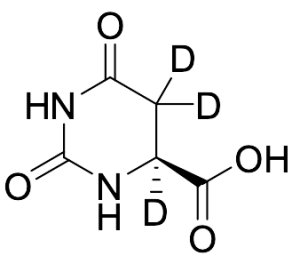
L-Dihydroorotic Acid-D3
$292.39 Add to cart View Product DetailsMolecular Formula : C5 D3 H3 N2 O4






